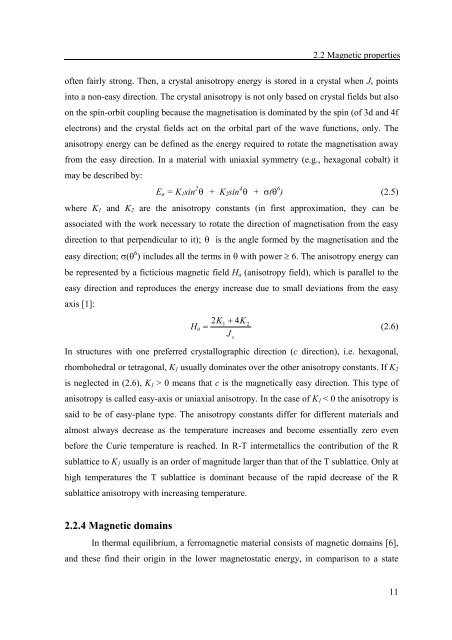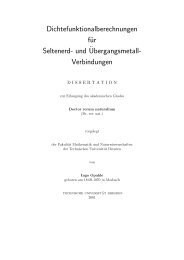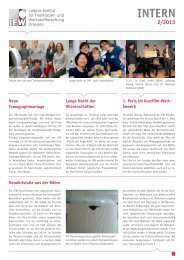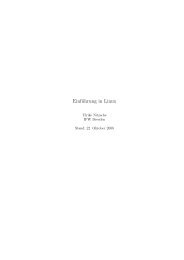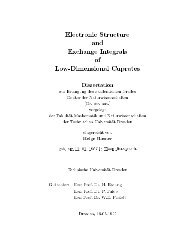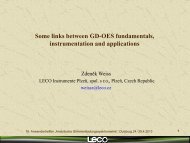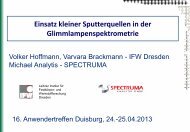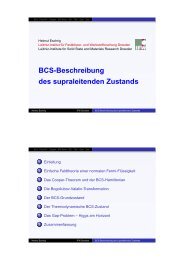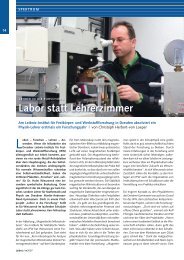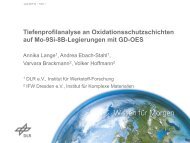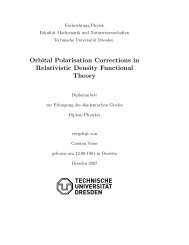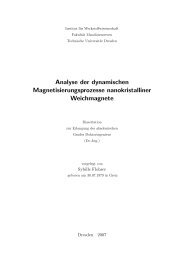ALBERTO BOLLERO REAL
ALBERTO BOLLERO REAL
ALBERTO BOLLERO REAL
You also want an ePaper? Increase the reach of your titles
YUMPU automatically turns print PDFs into web optimized ePapers that Google loves.
2.2 Magnetic properties<br />
often fairly strong. Then, a crystal anisotropy energy is stored in a crystal when J s points<br />
into a non-easy direction. The crystal anisotropy is not only based on crystal fields but also<br />
on the spin-orbit coupling because the magnetisation is dominated by the spin (of 3d and 4f<br />
electrons) and the crystal fields act on the orbital part of the wave functions, only. The<br />
anisotropy energy can be defined as the energy required to rotate the magnetisation away<br />
from the easy direction. In a material with uniaxial symmetry (e.g., hexagonal cobalt) it<br />
may be described by:<br />
E a = K 1 sin 2 θ + K 2 sin 4 θ + σ(θ 6 ) (2.5)<br />
where K 1 and K 2 are the anisotropy constants (in first approximation, they can be<br />
associated with the work necessary to rotate the direction of magnetisation from the easy<br />
direction to that perpendicular to it); θ is the angle formed by the magnetisation and the<br />
easy direction; σ(θ 6 ) includes all the terms in θ with power ≥ 6. The anisotropy energy can<br />
be represented by a ficticious magnetic field H a (anisotropy field), which is parallel to the<br />
easy direction and reproduces the energy increase due to small deviations from the easy<br />
axis [1]:<br />
H a<br />
2 K1 + 4K<br />
2<br />
= (2.6)<br />
J<br />
In structures with one preferred crystallographic direction (c direction), i.e. hexagonal,<br />
rhombohedral or tetragonal, K 1 usually dominates over the other anisotropy constants. If K 2<br />
is neglected in (2.6), K 1 > 0 means that c is the magnetically easy direction. This type of<br />
anisotropy is called easy-axis or uniaxial anisotropy. In the case of K 1 < 0 the anisotropy is<br />
said to be of easy-plane type. The anisotropy constants differ for different materials and<br />
almost always decrease as the temperature increases and become essentially zero even<br />
before the Curie temperature is reached. In R-T intermetallics the contribution of the R<br />
sublattice to K 1 usually is an order of magnitude larger than that of the T sublattice. Only at<br />
high temperatures the T sublattice is dominant because of the rapid decrease of the R<br />
sublattice anisotropy with increasing temperature.<br />
s<br />
2.2.4 Magnetic domains<br />
In thermal equilibrium, a ferromagnetic material consists of magnetic domains [6],<br />
and these find their origin in the lower magnetostatic energy, in comparison to a state<br />
11


